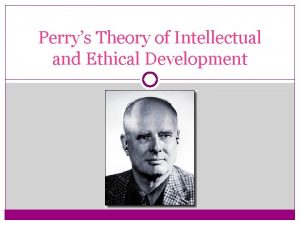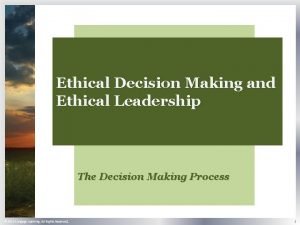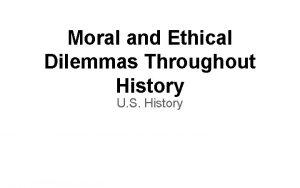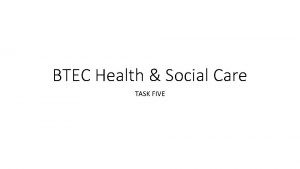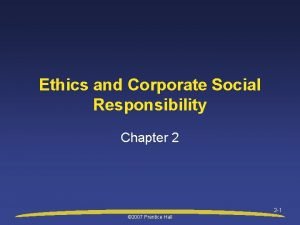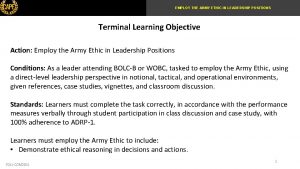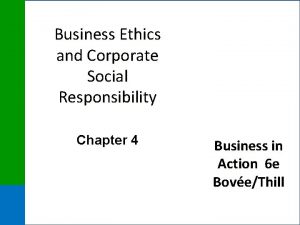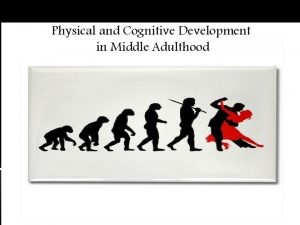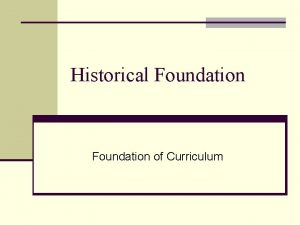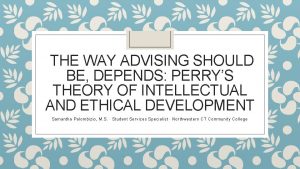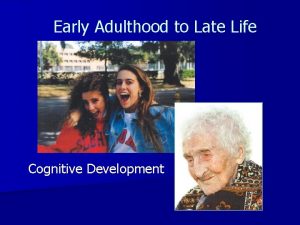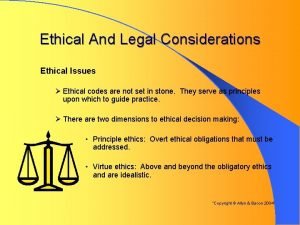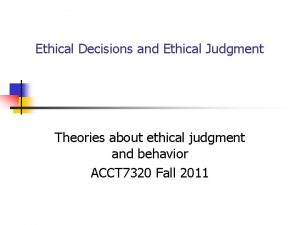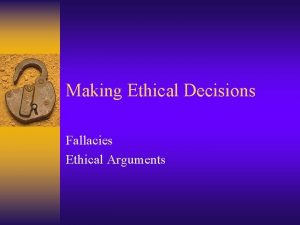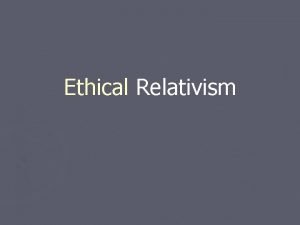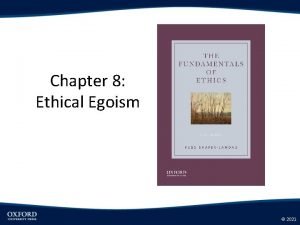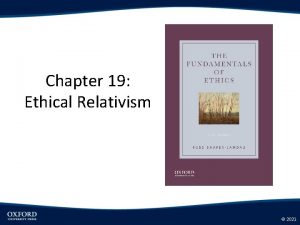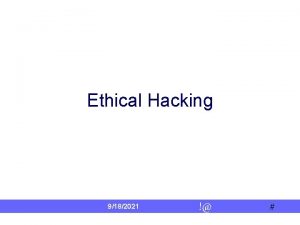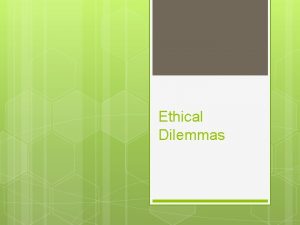Perrys Theory of Intellectual and Ethical Development Historical

















- Slides: 17

Perry’s Theory of Intellectual and Ethical Development

Historical Background �Perry was born in Paris, France 1913. �Received bachelor’s and master’s degree from Harvard where he studied English and Greek. � 1950 -1060 Director of Harvard University’s Bureau of Study Counsel College administrator Counselor to students Researcher-theorist in college-age development ( Rapaort, 2010 )

The Study �The longitudinal study consisted of students from Harvard University and Radcliffe University. �Used only interviews from the men of Harvard to validate his theory. � 2 major publications Very large book with examples and details of theory Condensed, yet equally challenging publication (Evans et al. , 2010, p. 85)

The Theory �Perry believed that college students journeyed through 9 positions of intellectual development. Basic Duality Full Dualism Early Multiplicity Late Multiplicity Contextual Relativism Pre-Commitment Challenges to Commitment Post-Commitment (Perry, 1970)

Dissecting the Positions �The 9 positions can be broken down into four categories: Dualism Multiplicity Relativism Commitment (Evans et al. , 2010, p. 85)

Positions in Motion Commitment Relativism Multiplicity Dualism

Dualism �Dualism is the mode of meaning making where, “the world is viewed dichotomously. ” Right and Wrong Good and Evil Black and White �Knowledge is viewed as quantitative. �Authorizes have the right answer. �Transition occurs: Cognitive dissonance (Evans et al. , 2010, p. 86)

Multiplicity �Mode of meaning-making where “diverse views are thought of as equally beneficial when right answers aren’t know. ” �Peers become source of knowledge �Students start thinking analytically �Transition occurs: Recognizing that support is needed. (Evans et al. , 2010, p. 85)

Relativism � Relativistic thinkers, “acknowledge that some opinions are of little value, and yet reasonable people can also legitimately disagree on some matters. ” �Knowledge is more qualitative and based on evidence and research. �Students start to evaluate answers and solutions (Evans et al. , 2010, p. 85)

Commitment in Relativism �A shift from cognitive development to ethical development. �This is where students find their “identity. ” �Realize that they have to make choices and are responsible for those choices. (Evans et al. , 2010, p. 85)

Deflections for Cognitive Growth �Temporizing- a “timeout” when movement is postponed from one position to the next �Escape- Abandonment of Responsibilities Failure to commit Alienation No desire to pursue anything �Retreat- Temporary return to dualism Overwhelmed Just wants answers (Evans et al. , 2010, p. 85)

Assessment Methods �Measure of Intellectual Development (MID) �Measure of Epistemological Reflection (MER) �Erwin's Scale of Intellectual Development (SID) �Moore’s Learning Environment Performance Measure (LEP) (Evans et al. , 2010, p. 89)

The Developmental Instruction Model �Knefelkamp and Widick �Four variabes of challenge and support characterize the model: (pg. 91) Structure Diversity Experiential Learning Personalism (Evans et al. , 2010, p. 91)

Why Should You Care? ? ? ?

Strengths and Weaknesses Strengths Weaknesses �Influential Work �Only used white, males �Gaining Basic �Students of the 1950’s understanding of how students make meaning. (Evans et al. , 2010, p. 96) �Simple Lables

Real World Applications �What is your name? �What position of meaning making are you in? �What year are you? (Freshman, Sophomore, ect) �What’s your favorite class? Why? �What forms of deflection might you run into?

Resources �Evans, N. J. , Forney, D. S. , Guido, F. M. , Patton, L. D. , & Renn, K. A. (2010), . Student development in college. San Fransisco: Jossey-Bass. �Perry, William G. , Jr. (1970), Forms of Intellectual and Ethical Development in the College Years: A Scheme. New York: Holt, Rinehart, and Winston. �Rapaport, W. J. (2010, October 9). William Perry's scheme of intellectual and ethical development. In University at Buffalo. Retrieved September 4, 2011. (Evans et al. , 2010, p. 85)
 Dualism multiplicity and relativism
Dualism multiplicity and relativism Development in community
Development in community The perceived relevance or importance of an ethical issue
The perceived relevance or importance of an ethical issue Historical ethical dilemmas
Historical ethical dilemmas Intellectual definition health and social care
Intellectual definition health and social care Perbedaan ethical dilemma dan ethical lapse
Perbedaan ethical dilemma dan ethical lapse Army ethical lenses
Army ethical lenses Perbedaan ethical dilemma dan ethical lapse
Perbedaan ethical dilemma dan ethical lapse Intellectual development middle adulthood
Intellectual development middle adulthood Late adulthood cognitive development
Late adulthood cognitive development Emotional development in early adulthood
Emotional development in early adulthood Chapter 9 intellectual development in the first year
Chapter 9 intellectual development in the first year Intellectual development characteristics
Intellectual development characteristics Historical basis of curriculum
Historical basis of curriculum Historical development of community health nursing
Historical development of community health nursing Historical development of hospitality industry
Historical development of hospitality industry Historical development of environmental law
Historical development of environmental law Historical background of environmental education
Historical background of environmental education
